"Have you done it?" she asked.
"Well, no..." So this afternoon I spent a short time phoning for Francine Busby, a Democrat running for Congress in a special election in southern California, via MoveOn.org Political Action.
This technology requires uninterrupted web access (almost certainly broadband) and the concurrent ability to dial phone numbers.
I signed up online with Move-On to make 15 calls and immediately got a confirmation email. (Click on any of these images to see a large screen shot.)
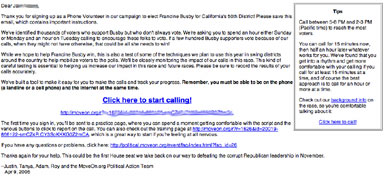
When I "clicked to start calling" I arrived at a script training screen on which I could pretend that I had made the call and click through the various options so I knew what to do if the phone number was wrong, if there was an answering machine, or (hip hip hooray!) I "reached a voter."
I also had access to an online video of someone using the script (didn't watch it) and a full written page of instructions:
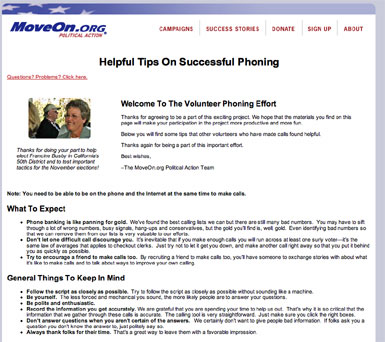
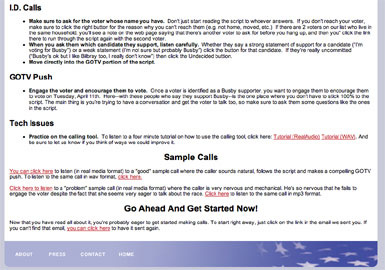
Although Move-On's recruitment had been for GOTV calls to identified Busby supporters, those easy calls had all been done, so the phoning had reverted to ID calls to voters whose preference was unknown. That is, we were trying to find more Busby voters so they could be reminded to turn out on Tuesday.
The first call screen provided a number to call -- and a lot of options if you didn't reach the voter (the normal experience in most election phoning). I've obscured voter identities on these screen shots.
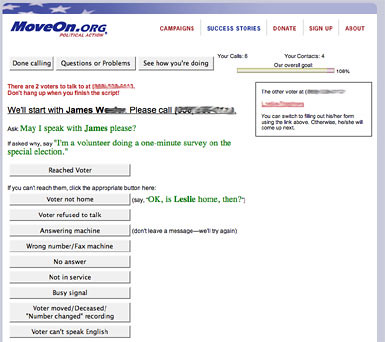
If I reached a voter, I saw this:
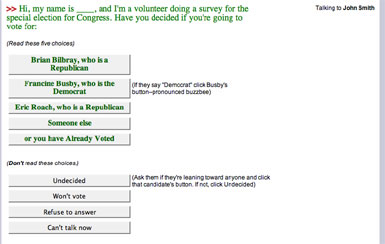
If the voter's choice was anyone but Busby or they had already voted, I was to thank them and end the call.
If the person reached was a Busby voter, I clicked to this screen:
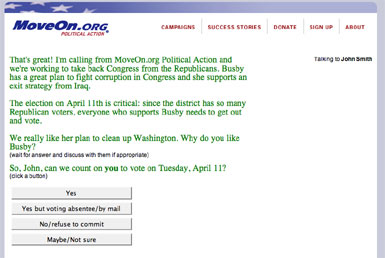
After holding the conversation, I was to give the voter their polling place information

I made my 15 calls very quickly -- it helps to have long ago learned that if you don't ever put the receiver down, you get through faster. Somewhat to my astonishment, I had only one definite wrong number and one answering machine that led me to believe I had another. I made 5 actual contacts and found 1 Busby voter, 1 Roach voter, 2 already voted, 1 decline to state. These voters must not be experiencing a deluge of phone calls; they didn't seem annoyed and replied to my politeness with their politeness.
Another, clickable Move-On screen let me know how we phoners were doing:
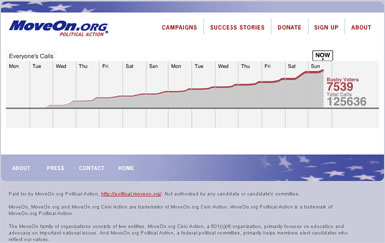
At the end, Move-On signed me out by trying to sign me up for another shift and collecting my demographics: sex, age, and race.
It was a very pleasant experience. I particularly liked that every screen gave me the easily read name of the person I was talking with; that can get to be a problem for punch-drunk callers using paper lists. I'm sure I'll be doing something very like it again, not as a test of the technology, but in the heat of a campaign battle.
1 comment:
Thanks for this report. I did some calls for Move On last year, I think for the special Governor's race. It wasn't a bad experience then. But, the system wasn't nearly so smooth as you describe now.
I think it's a great idea. I wish something like that could be used to do informational calls on issues, not just elections.
Like Universal Health Insurance for Everyone.
Post a Comment